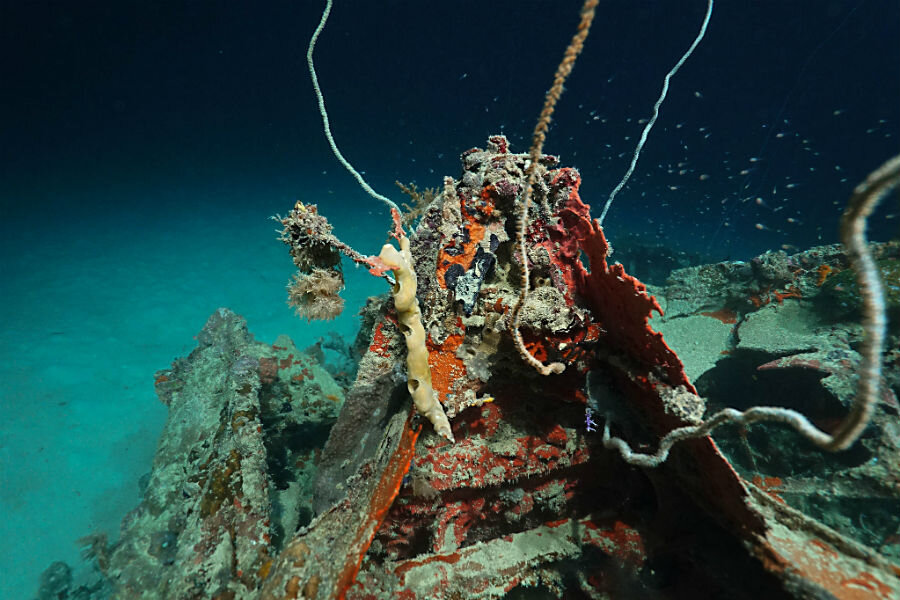After 72 years, a lost World War II bomber is found
Loading...
An American torpedo bomber missing since World War II was recently discovered in the waters of the western Pacific Ocean by a joint historical and oceanographic research team.
The downed TBM-1C Avenger, a General Motors-made aircraft put into use by the United States Navy after the US' entry into the global conflict, was located in the coral reefs off of the Republic of Palau. The find was facilitated by Project RECOVER, an initiative designed to locate World War II-era military vehicles and missing in action (MIA) soldiers associated with lost craft.
"This recovery is another step closer towards Project RECOVER's goal of finding the final underwater resting places of all Americans missing in action since World War II," said Dan Friedkin, Air Force Heritage Flight Foundation chairman and financial backer of the TBM-1C recovery, in a release on the nautical discovery.
"As someone who gained a passion for flying and admiration for our country's brave service members as a child, I will continue to support the efforts of Project RECOVER and their partner organizations," he said. "Every family member impacted by the loss of a service member deserves this type of closure."
The Project RECOVER research cooperative is backed by the University of Delaware College of Earth, Ocean, and Environment, the Scripps Institution of Oceanography, and a nonprofit MIA search organization, The BentProp Project.
According to Scripps, the more than five-ton TBM-1C Avenger is one of many downed aircraft scattered underwater among Palau's waters. The model found by Project RECOVER was one of more than 2,300 manufactured by General Motors during the war, with the Grumman Corporation and GM building thousands more TBM and TBF Avengers through the war and into the 1960s.
In addition to the aircraft lost in Palau, the remains of an estimated 80 to 100 US service members are dispersed throughout the island country's lagoons and reefs.
"The importance of our mission is reinforced with each new discovery of a missing aircraft," Scripps oceanographer Eric Terrill said in the institute release. "But this is more than reconnecting with history; it's about locating the missing to enable the US government to bring them home for a proper burial. With potential recovery sites around the world, Project RECOVER and its team of researchers and volunteers are expanding to intensify its searches using modern science and technology."
Palau was home to one of the fiercest conflicts between American and Japanese forces during World War II; the Battle of Peleliu, fought over the strategic five-square-mile island, resulted in death or injury for thousands of soldiers on both sides. And over the course of the war in the Pacific, around 200 US aircraft were shot down over Palau – although around 100 of those crashed in waters too deep for potential recovery efforts at this time.
Scripps did not announce where in Palau the missing TBM-1C Avenger was found, or whether the craft contained the remains of any MIAs.






